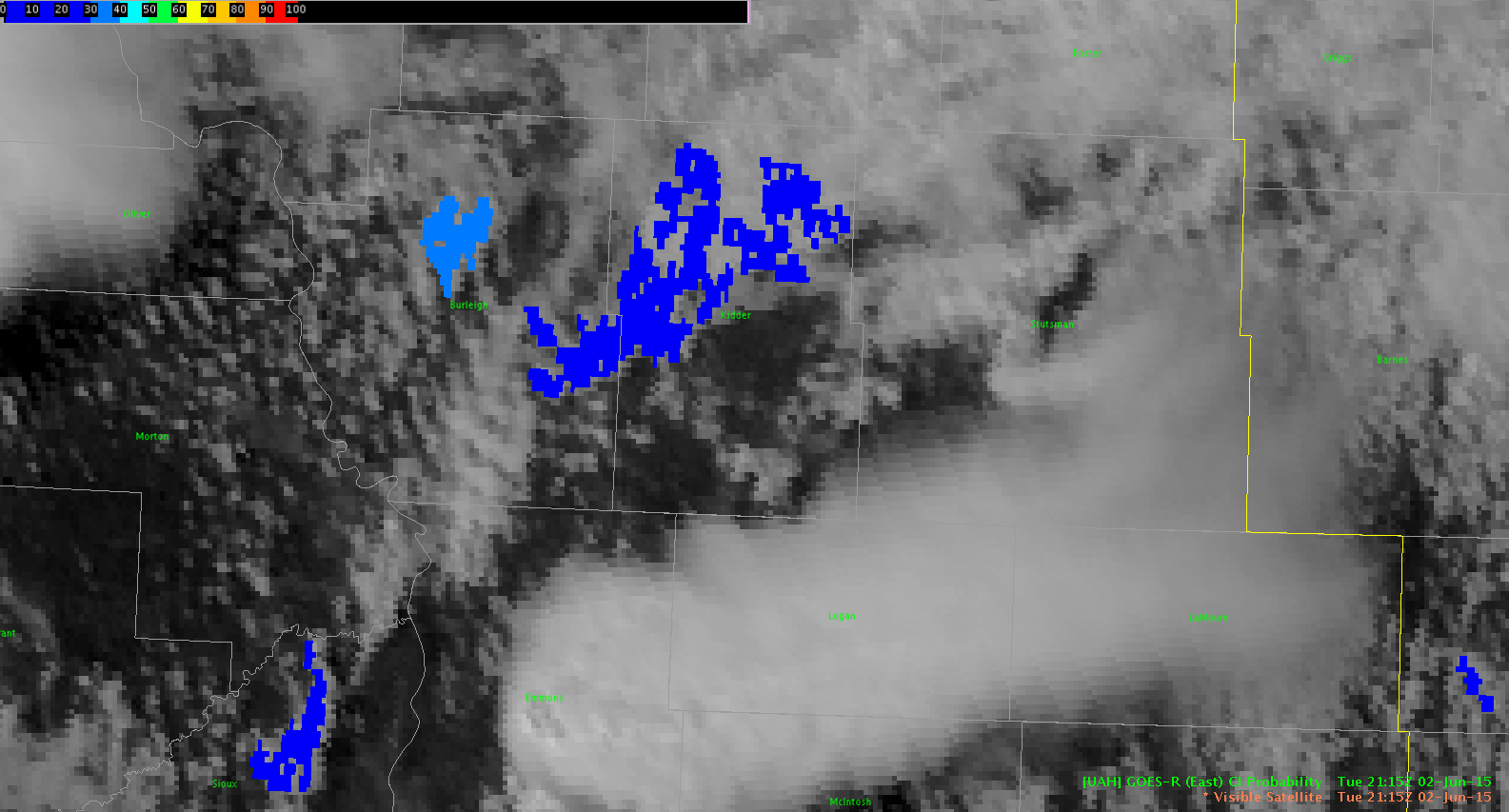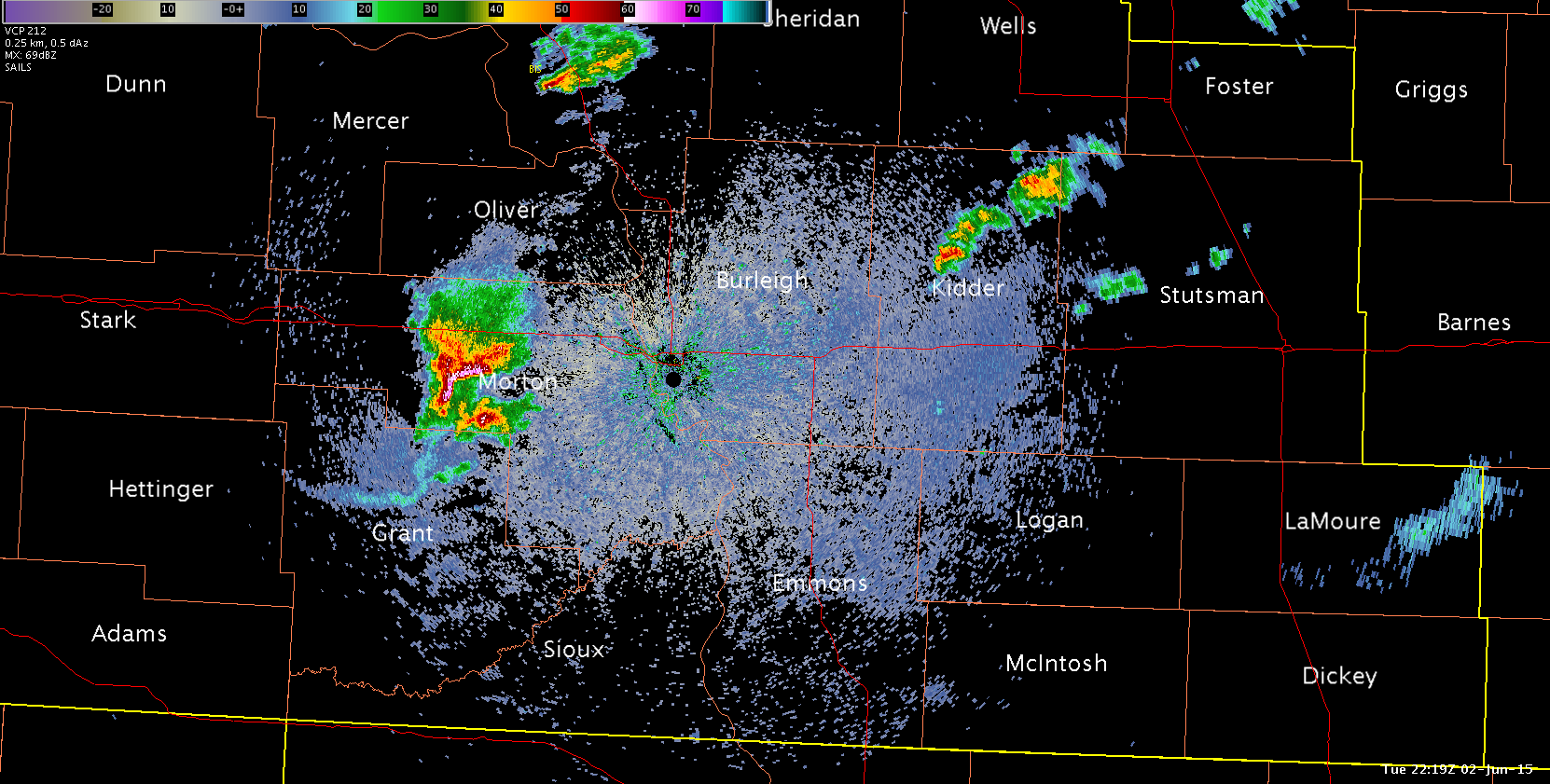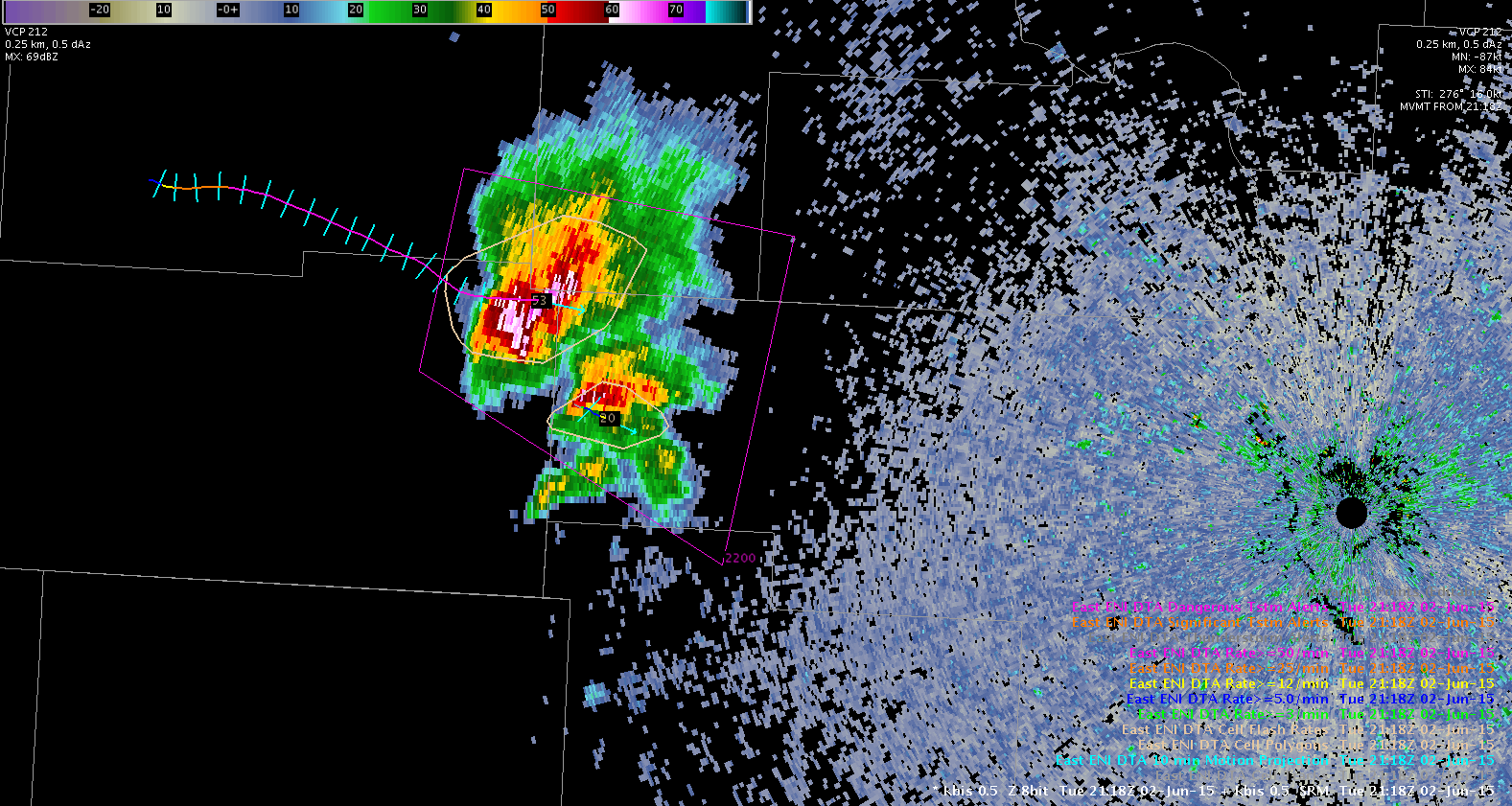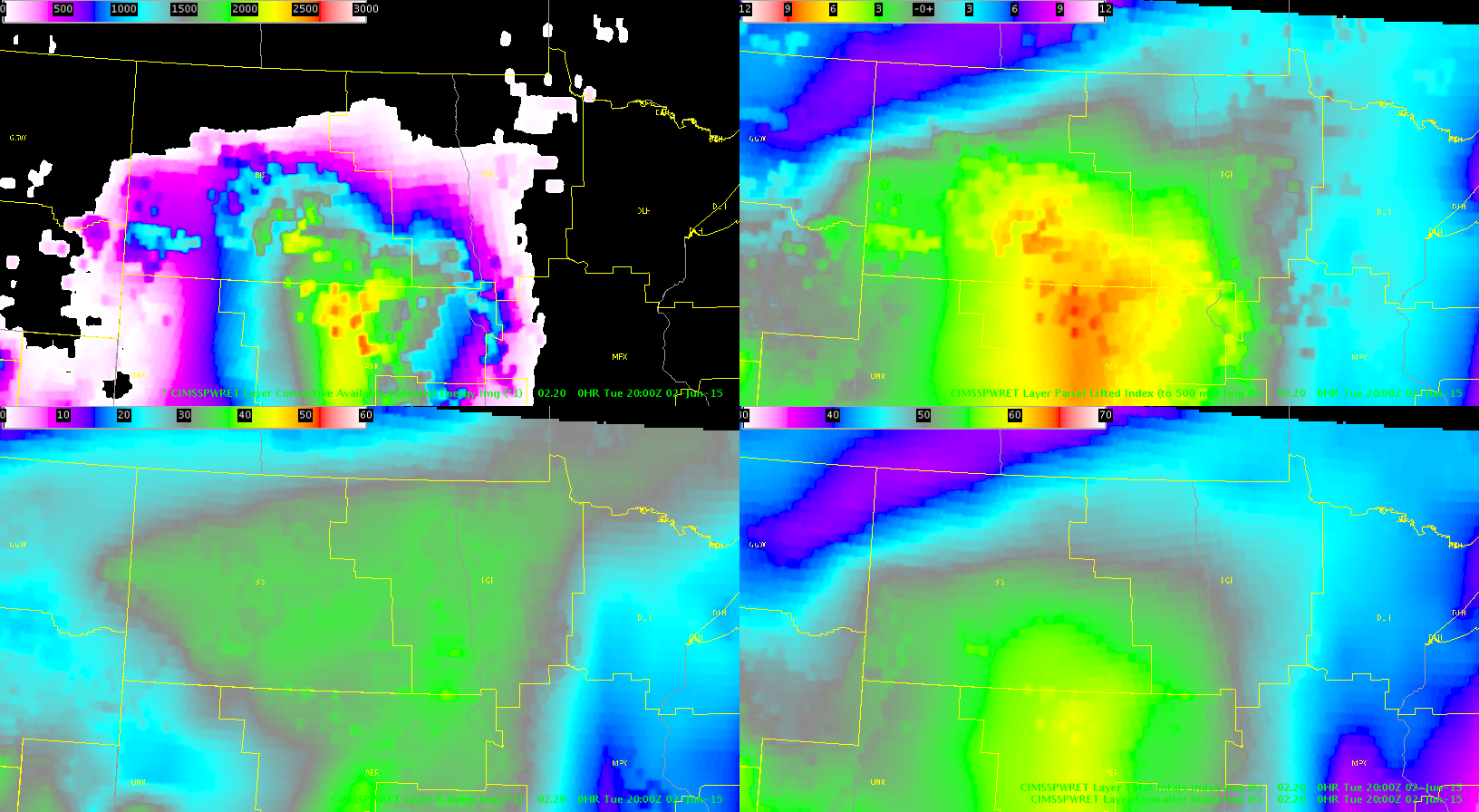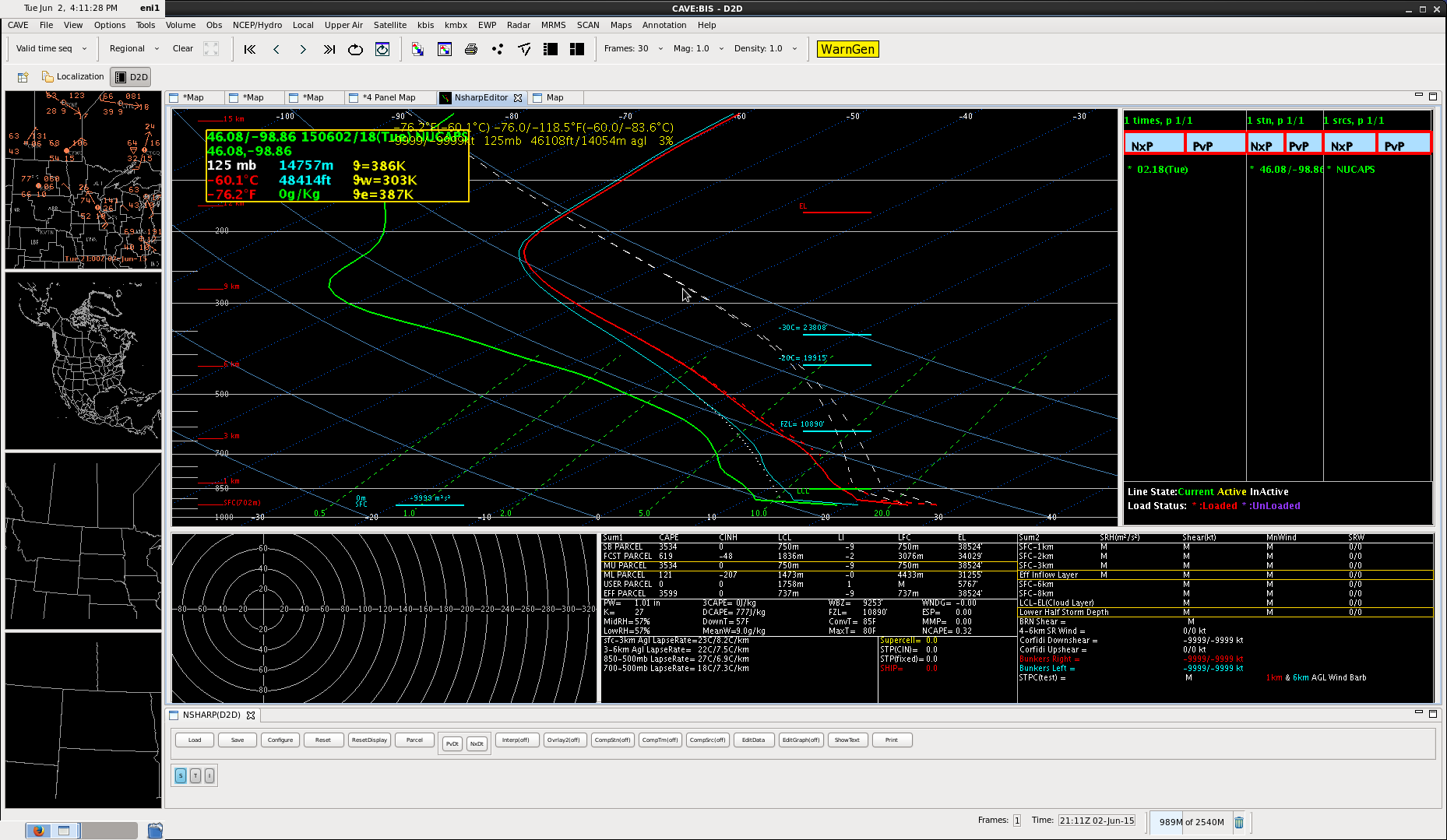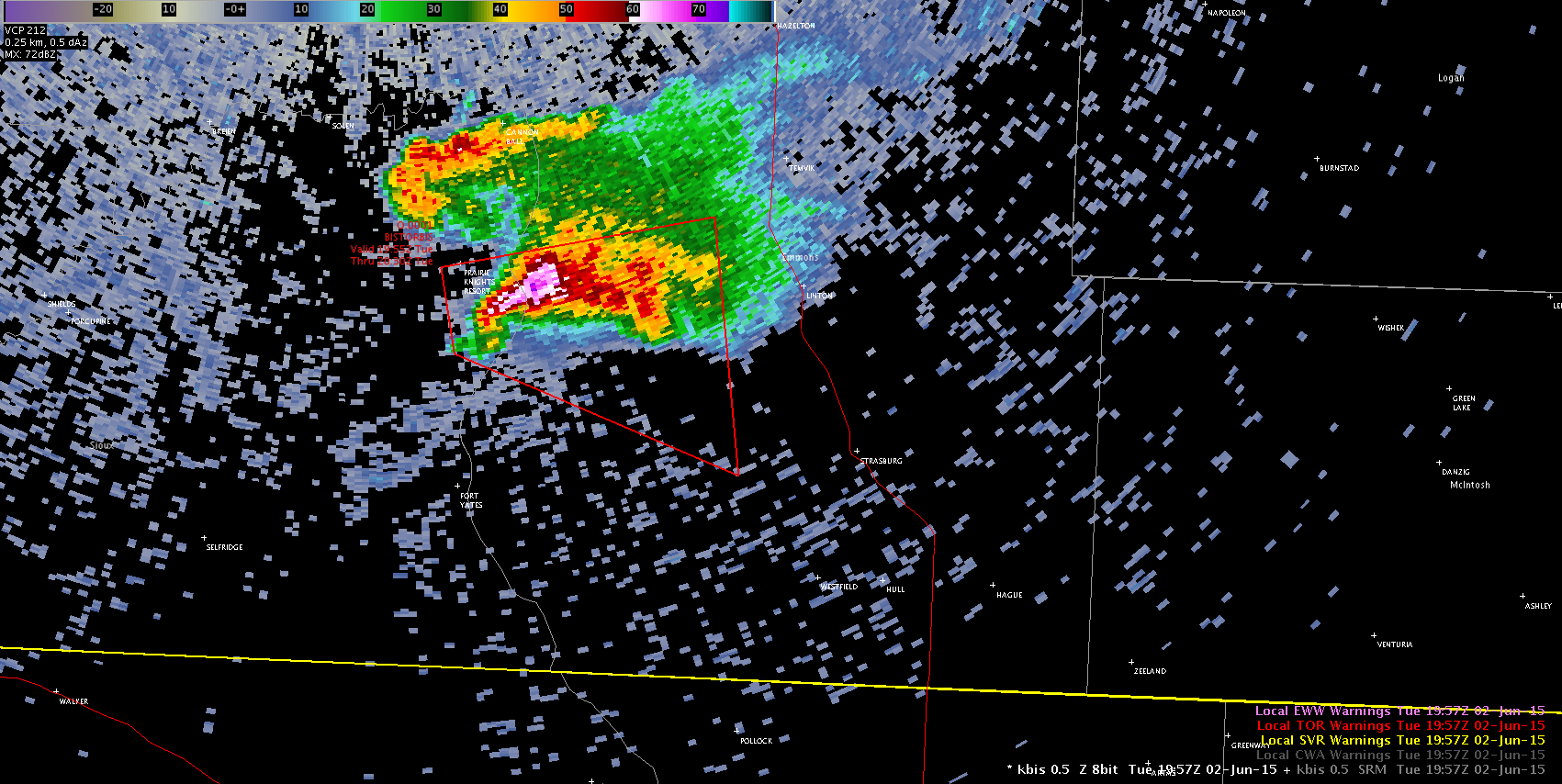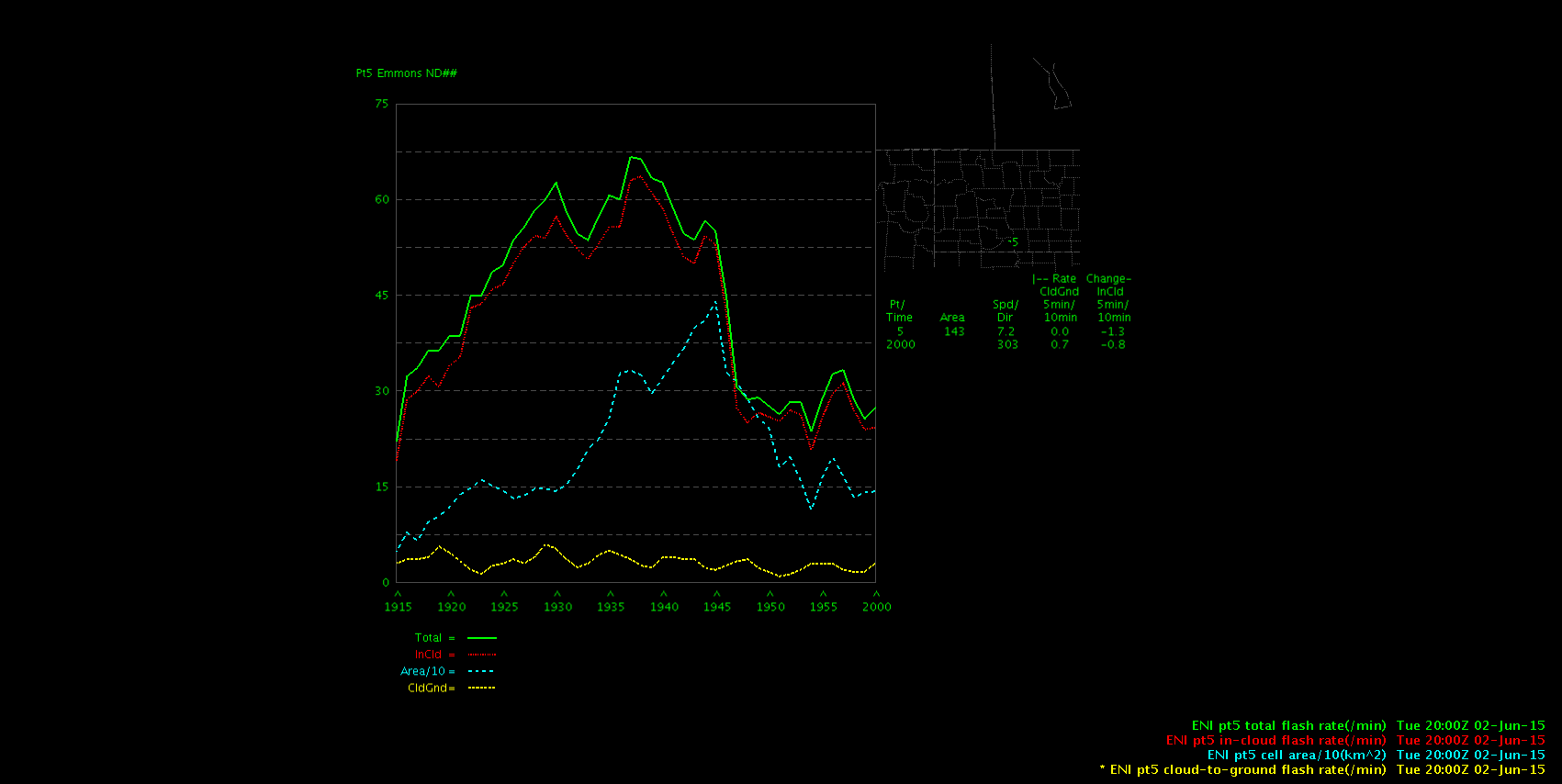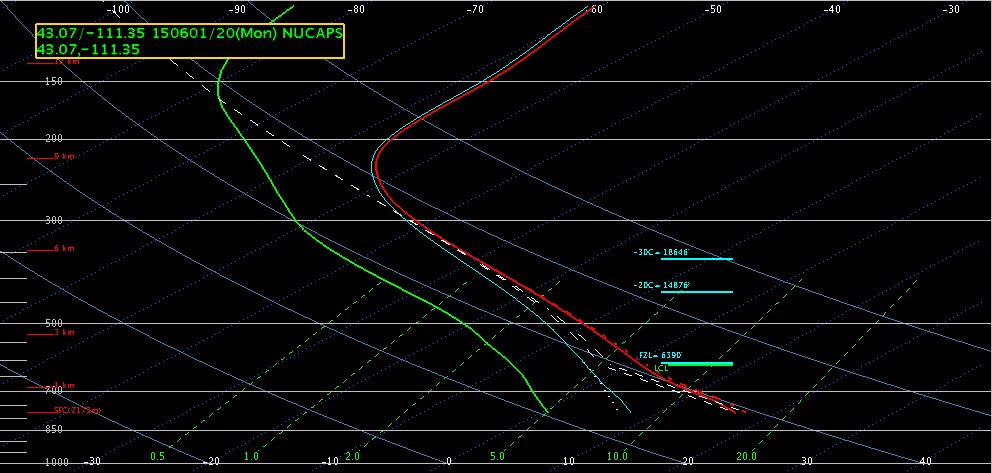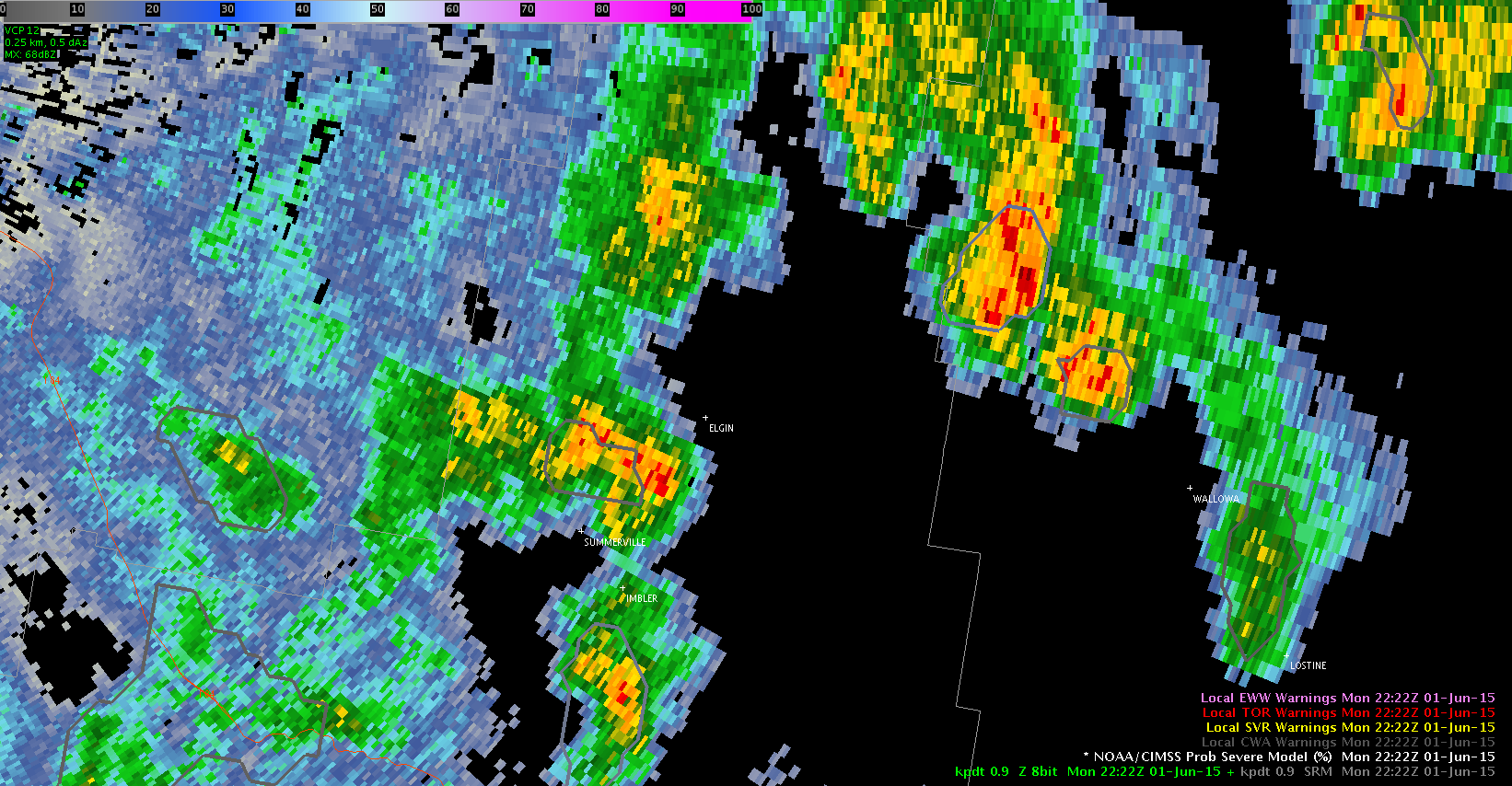Issued a SVR at 23:53z over northern Stutsman County. Lightning flash rate increased prior to intensification from 2340Z to 2347Z (fig 1) then the cell produced 55 dbZ to >30kft. The cell was getting to be far from the radar with the 0.5 scan reaching only 12.5kft. ProbSevere showed probability of 94% at this time (Fig 2). The limited low level information with a farther distance from the radar made the use of ProbSevere more heavily weighted in the warning decision. –CattyWampus
Fig 1: Increasing flash rate from 2340Z to 2347Z.
Fig 2: ProbSevere 94% at 2352z.




